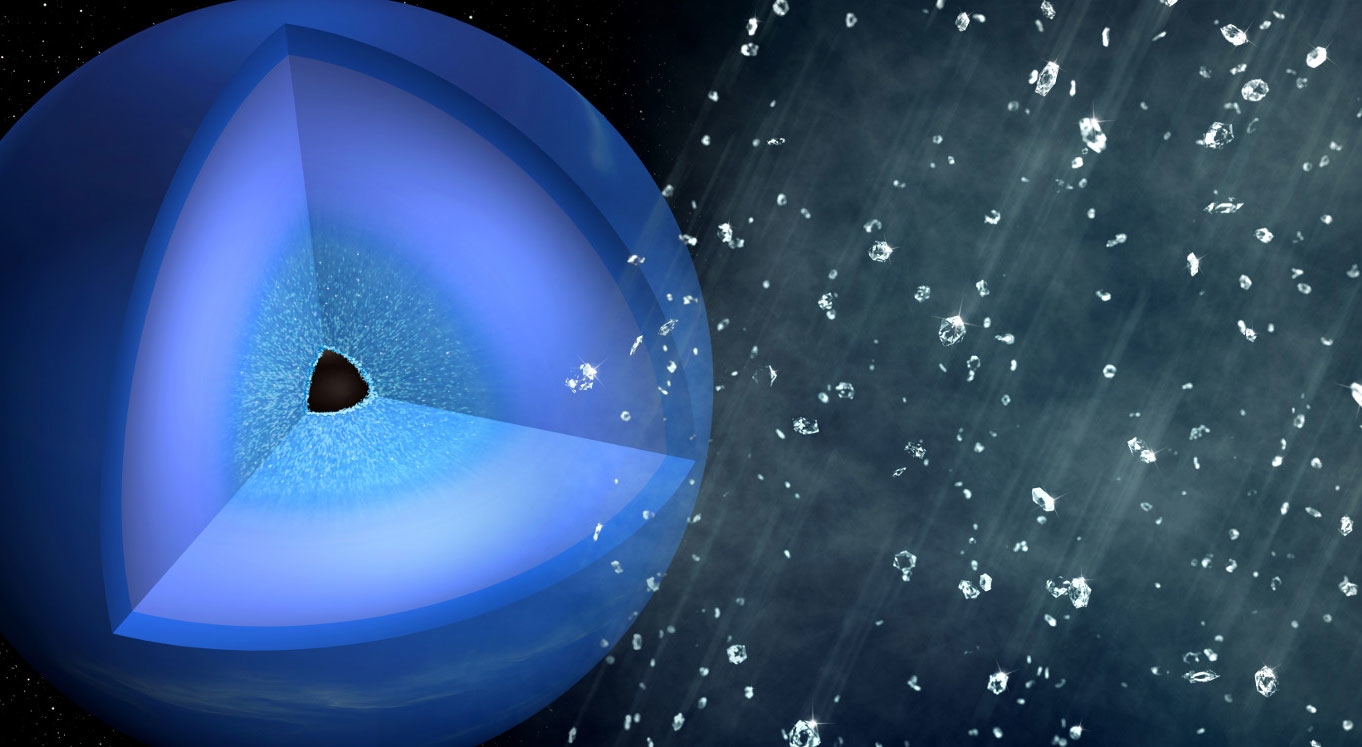While we’ve yet to fully explore Neptune and its fellow gas giants, scientists have a lot of theories about them based on the info we know. For instance, they believe that it rains diamonds on those planets — diamonds that sink into their interior and form a sparkly crust around their solid cores. Since it might take a long time before we can study our gas giants more closely, a team of researchers have decided to take matters into their own hands. They recreated Neptune’s conditions at Stanford’s SLAC Laboratory and successfully observed the formation of diamond rain, thanks to the help of some very powerful lasers.
The team used a plastic material called polystyrene to simulate Neptune’s methane-rich atmosphere. Both the plastic and methane, which is responsible for the planet’s blue cast, are made of hydrogen and carbon molecules. To create the high-pressure conditions that squeeze those hydrogen and carbon molecules into diamonds, they used SLAC’s Matter in Extreme Conditions (MEC) instrument located inside the most powerful x-ray laser in the world, the Linac Coherent Light Source (LCLS). This instrument combines the beams emitted by LCLS with high power optical laser beams.
SLAC recently upgraded MEC to give it the power of 17 Teslas discharging 100 kilowatt-hour batteries in a single second. Scientists can now use it to recreate the extremely high pressure conditions of distant planets for study, which is exactly what this particular group did. They created shockwaves in the plastic using MEC’s lasers, which turned almost every carbon atom in the material into diamond structures a few nanometers in size. The stones Uranus and Neptune squeeze out can make Marilyn Monroe swoon, though: the researchers believe they could reach millions of carats in weight.
The lasers they used also allowed the team to gather data in real time, something previous attempts weren’t able to do because the conditions needed to create diamonds only last a fraction of a second in the lab. This gives the researchers valuable info on how diamond rains happen, and scientists could apply the knowledge gained from this experiment when studying exoplanets. In the future, people could also use this study’s results to manufacture nanodiamonds for jewelry, scientific equipment, electronics and other commercial purposes.
Now that they’re done recreating Neptune in the lab, the researchers plan to use the same methods to look into the interior of other types of planets. Team leader Dominik Kraus explained that since “[w]e can’t go inside the planets and look at them… these laboratory experiments complement satellite and telescope observations.”
(44)

